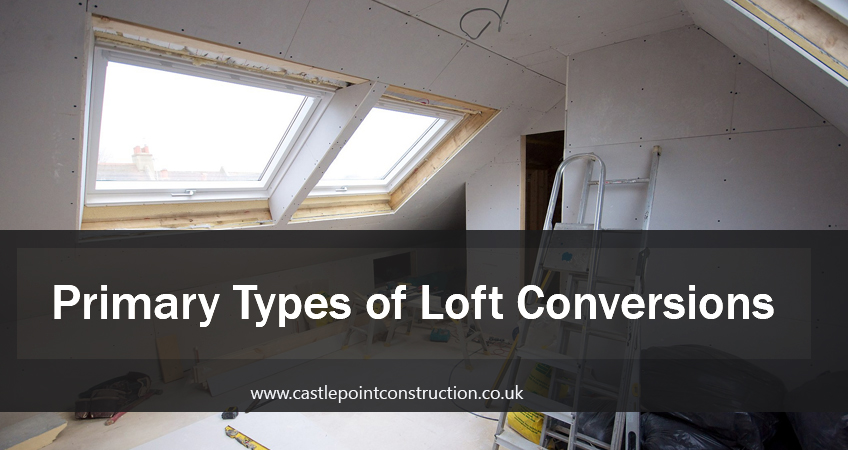Transforming the unused space beneath your roof into a vibrant and functional area of your home can not only enhance your living experience but significantly increase the value of your property.
In this comprehensive guide, we’ll explore the ins and outs of loft conversions, offering insights into the myriad of possibilities that await homeowners, DIY enthusiasts, and property developers alike.
What is a loft conversion?
At its core, a loft conversion is the process of reworking existing roof and loft space into a functional room, be it a bedroom, office, gym, or entertainment space. This remodelling venture goes beyond mere renovation and fully repurposes what is often overlooked square footage into a valuable part of your home.
From simple alterations that maximise space utilisation to complex redesigns that alter the structure of your roof, loft conversions can cater to a broad spectrum of needs.
Benefits of loft conversions
Maximum space in your home
In a world where space is at a premium, repurposing your existing loft space into a functional room can bring a sense of spaciousness and functionality to your home without sacrificing any outdoor square footage.
Increased property value
One of the most significant benefits of converting your existing roof space into a room is the potential increase in your property’s market value. Adding a well-designed, functional space to your home can attract a broader range of buyers if you decide to sell.
Cost-effective expansion
Compared to external extensions, loft conversions are a cost-effective way to add space to your home. Since the structure is already in place, you’re halfway there before the work even begins.
Energy efficiency
Loft conversions often involve upgrading the insulation and windows, which can greatly improve your home’s thermal efficiency and reduce heating bills.
The 6 different loft conversion types
There are several styles of loft conversion, each with its unique set of advantages and considerations. Choosing the right one depends on your home’s structural design, your budget, and your aesthetic preferences.
1. Velux loft conversion
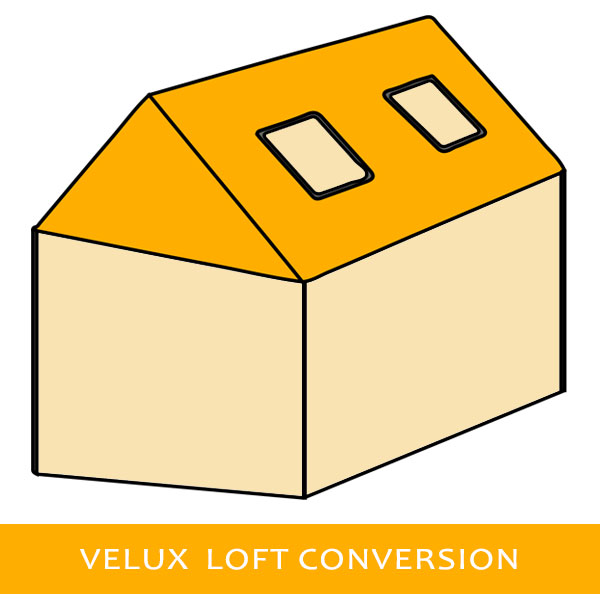
A Velux loft conversion is amongst the easiest and most cost-effective options available. By adding roof light windows without altering the roofline, this conversion brings in plenty of natural light while keeping costs and construction changes minimal. A roof light conversion is one of the most popular styles and can be added to a mid-terrace period property as well as semi-detached and detached properties.
2. Dormer loft conversion
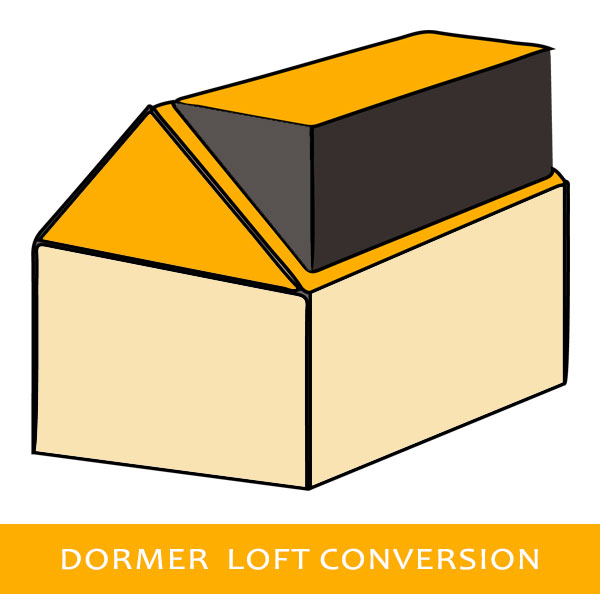
Offering more space and headroom than Velux conversions, a simple dormer loft conversion includes building a vertical wall from the bottom of the sloping roof and adding a flat roof. A dormer conversion is ideal for adding considerable usable space and natural light.
3. Hip-to-gable loft conversion

This conversion extends the ‘hip’ roof out to create a vertical ‘gable’ wall, maximising internal loft space. Hip-to-gable extensions are best suited for semi-detached or end-of-terrace homes.
4. Mansard loft conversion
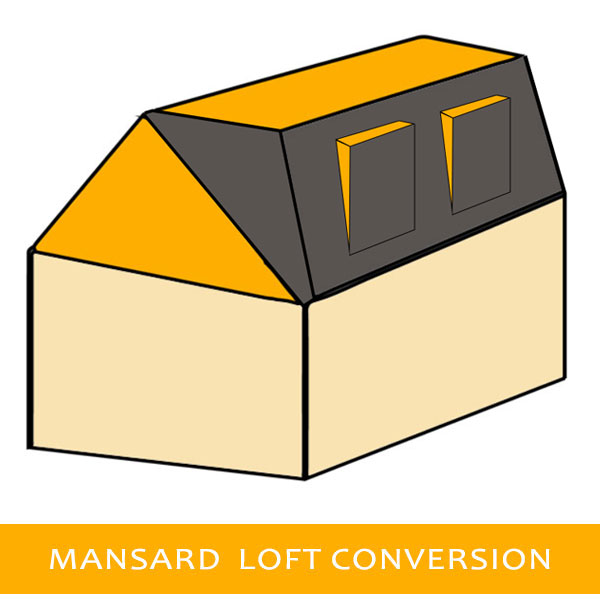
Mansard loft conversions involve replacing one or both roof slopes with steeply pitched sides and a flat roof over the top, dramatically increasing space. While offering substantial increased room and floor space, this type is more costly and likely requires planning permission.
5. L-shaped Loft Conversion
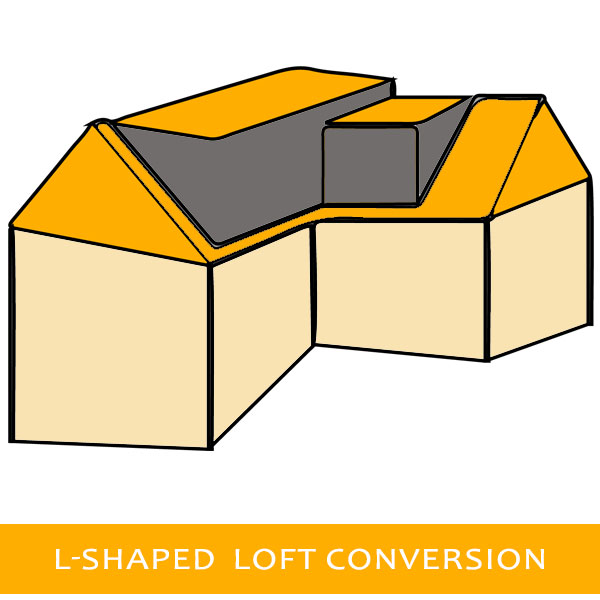
Ideal for Victorian and Edwardian terraced houses, L-shaped loft conversions involve constructing two dormers – one on the main roof and another on the rear roof. It offers an exceptional amount of space and is versatile for various uses.
6. Bungalow Loft Conversion
Bungalows with sufficient loft space benefit greatly from conversions. Depending on the roof structure, all the above types of conversions can be applied to bungalows, significantly increasing living space and property value as bungalow loft conversions.
FAQs
How long does a loft conversion take?
Typically, a loft conversion can take around 8-12 weeks, varying by the complexity and type of conversion.
Do I need planning permission?
Many loft conversions fall under ‘permitted development’ and don’t need planning permission, but it’s crucial to check with your local planning authority first.
How much does a loft conversion cost?
Costs vary widely depending on the conversion type and other factors like location and materials used. We’ve put together a complete post that looks at the different costs associated with each style of loft conversion, and for the most precise cost estimate, it’s best to get a detailed quote from a local specialist.
Can all homes have a loft conversion?
Most homes can have a loft conversion, but factors like roof pitch, internal height, and local planning restrictions can affect feasibility.
Is my loft big enough for a conversion?
A minimum height of 2.2 metres from the floor to the highest point is generally needed for a conversion.
Conclusion
Loft conversions represent a savvy investment for those looking to enhance their home’s functionality and resale value. Not only do they offer a practical solution to the universal challenge of needing more space, but they also introduce the possibility of designing a room that precisely fits your personal or family’s needs – be it a tranquil home office, an energetic playroom, or a cosy guest bedroom.
While the process may seem daunting at first, understanding the types of conversions available and their respective benefits can significantly simplify your decision-making. Remember, careful planning and consultation with professionals not only ensure that your loft conversion meets your expectations but also adheres to local regulations and structural requirements.
By transforming overlooked attic space into a vibrant and useful area, homeowners can not only enhance their living experience but also contribute positively to their property’s market value. In essence, a loft conversion is more than just an upgrade; it’s a wise and forward-thinking choice for any homeowner.
Ready to transform your loft space?
Interested in unlocking the potential of your unused loft space? Contact Castlepoint Construction today for expert advice and a free quote. Our team of experienced professionals is here to guide you through every step of your loft conversion project, ensuring a seamless and rewarding experience.
Transform your home with Castlepoint Construction – where innovation meets excellence.
